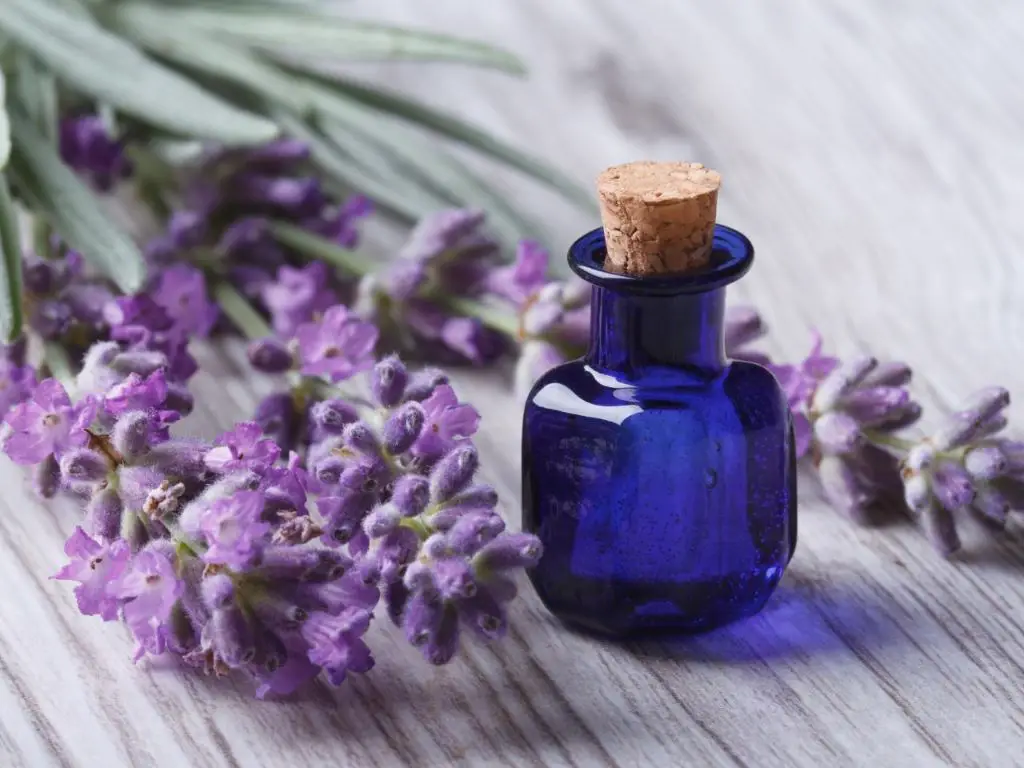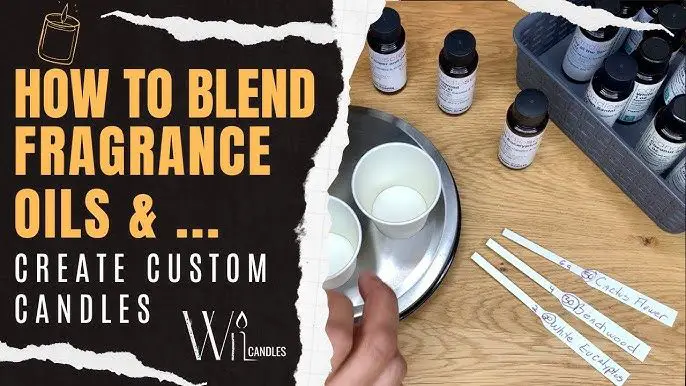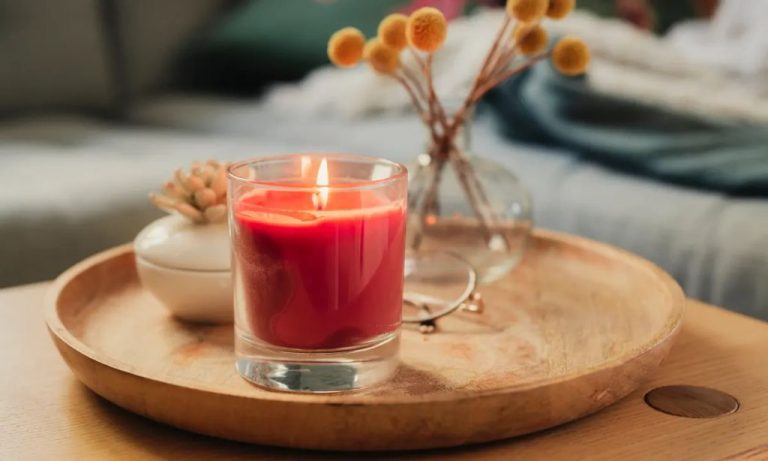How Are Scents For Candles Made?
Scented candles are candles that have been infused with fragrant oils to provide a pleasant aroma while burning. The art of making scented candles dates back thousands of years, with evidence of their use in ancient Egypt, China, and Rome.
Unlike regular candles that provide only light, scented candles engage our sense of smell to create an immersive sensory experience. The fragrance oils used in candles contain volatile aromatic compounds that evaporate when heated and travel through the air to our nose. When we breathe in these molecules, scent receptors in our nose detect the smell and send signals to the brain. This triggers emotional responses and memories associated with that particular scent.
Choosing the right fragrance is crucial in scented candle making. Popular scents include floral, fruity, spicy, woody, and fresh aromas. The scent should complement the purpose of the candle, whether it’s relaxation, aromatherapy, or creating a warm ambiance. Scent is often the deciding factor for consumers when purchasing candles. It’s what transforms an ordinary candle into a delightful sensory treat.
Where Scents Come From
Candle scents can come from natural sources like plants, herbs and spices or they can be artificially created in a lab. Many of the most popular candle scents leverage natural extracts from things like flowers, fruits, woods and herbs. For example, jasmine and lavender scents are derived from the essential oils of those flowering plants. Citrus scents like lemon, orange and grapefruit use extracts from the rinds of those fruits. Scents like cinnamon, clove and pine come from the natural oils found in the bark, needles and spices of those plants.
In addition to natural essential oils, candlemakers also use synthetic fragrance oils to create scents. These artificial scents are produced in labs by combining chemical ingredients to replicate natural smells or invent completely new aromas. This allows for more flexibility and creativity in scent design. The perfumers behind synthetic fragrance oils have a vast palette of aromatic chemicals to work with. By blending these ingredients in different formulas, they can engineer custom scents that would be difficult or impossible to extract directly from nature.
Extracting Natural Scents
Natural scents used in candles are extracted from plant materials such as flowers, fruits, spices, herbs, roots and resins using various methods. Some common methods for extracting aromatic compounds from plants include:
Distillation – This involves heating plant material and condensing the steam which contains the aromatic compounds. The steam passes through a condenser and is collected as a liquid known as an essential oil or hydrolat. Some commonly distilled plants include lavender, rosemary, eucalyptus and citrus fruits.
Solvent extraction – Plant material is mixed with a solvent which pulls the aromatic compounds out of the plant material. The solvent is then removed, leaving behind a concentrated extract. Some solvents used include hexane, ethanol and supercritical carbon dioxide. Jasmine and tuberose are examples of floral scents extracted via solvents.

Expression – Some citrus fruit peels like orange, lemon and lime contain oil glands that release aromatic oils when pressed or squeezed. The oils are separated from the plant matter through filtration.
Enfleurage – Flowers like gardenia and tuberose are placed on a layer of vegetable or animal fat to extract their scent. The scented fat is called a pommade and can be rinsed with alcohol to create an extract.
These traditional methods allow candle makers to capture the natural fragrances of plants in a concentrated form to scent candles. They yield complex, multi-dimensional scents that can be blended to create natural aroma profiles.
(Sources: https://www.soapguild.org/tools-and-resources/resource-center/169/natural-scent-extraction/, https://fontanacandlecompany.com/blogs/bee-well-blog/what-is-natural-fragrance-and-is-it-safe)
Creating Synthetic Scents
Synthetic scents are created in laboratories using chemical compounds derived from petroleum or other sources. The most common methods for creating synthetic fragrance compounds are:
Acylation: This technique reacts an aromatic hydrocarbon with an acyl chloride using a Lewis acid catalyst such as aluminium chloride. The reaction produces new fragrant esters and ketones. For example, reacting benzene with acetyl chloride creates acetophenone, which has an orange blossom scent. [1]
Alkylation: Alkylating an aromatic hydrocarbon with an alkyl halide using a Friedel-Crafts catalyst like aluminium chloride produces more complex fragrant compounds. Alkyl side chains change the odor and intensity. For instance, alkylating toluene creates derivatives like phenethyl alcohol which smells of roses. [2]
Perfume chemists combine multiple reaction techniques and ingredients to produce synthetic fragrances that mimic natural scents or create entirely new ones. Using synthetic methods allows more control, consistency, and costs savings compared to extracting essences from plants.
Measuring and Mixing Scents
The process of achieving the perfect scent for a candle begins with carefully measuring and blending the right fragrance oils and chemicals. Fragrance oils are concentrated aromatic compounds and the amount used in candle making is referred to as the “fragrance load.” A typical fragrance load is 5-10% of the weight of wax in a candle. For example, for a 16 oz candle made with 1 pound of wax, you would use 1-2 oz of fragrance oil 1. Fragrance load can be adjusted based on the strength of the scent and personal preference.
Fragrance oils contain complex blends of natural and synthetic fragrance notes. Top notes provide the initial aroma, middle or heart notes emerge next, and base notes come through as the candle burns. Expert candle makers carefully blend fragrance oils and additional fragrance chemicals to achieve the desired scent profile. Testing multiple small batches while taking detailed notes is key to replicating candle scents accurately.
Types of Scents
Candles scents typically fall into a few main fragrance categories or families. Some of the most popular types of scents for candles include:
Floral Scents
Floral scents like rose, jasmine, lavender, and lilac evoke the beauty of flowers and gardens. They are often described as light, feminine, and romantic.
Fruit Scents
Popular fruit scents for candles include citrus fruits like lemon, grapefruit, and orange, as well as apple, mango, strawberry, and others. Fruit scents smell fresh, vibrant, and sweet.
Spice Scents
Warming spice scents like cinnamon, clove, ginger, nutmeg, and vanilla are often blended into candles. They have a cozy, comforting aroma with a touch of heat.
Wood Scents
Woody scents like cedar, sandalwood, pine, and oak have an earthy, masculine aroma. They evoke the great outdoors and rugged landscapes.
By blending scents from multiple fragrance families, candle makers can create unique scent experiences like spiced apple or citrus blossom.
Matching Scents to Candles
Choosing the right scent for a candle depends on factors like the type of wax, the candle’s color, and its intended use. When pairing scents with specific waxes, lighter scents like fruits and florals work well with soy wax, while bolder aromas like musk and sandalwood suit paraffin wax. The color of the candle also impacts how its fragrance is perceived. For example, fruity scents complement colorful candles, whereas white or ivory candles pair nicely with clean scents like linen or vanilla. Scents can also be chosen based on the candle’s purpose, like seasonal scents for holiday candles, soothing lavender for bedtime candles, or stimulating eucalyptus for waking-up candles.
According to https://www.candlescience.com/learning/how-to-blend-fragrance-oils/, blending complementary scents like floral and woodsy can create more complex, unique fragrances for candles. Testing different scent combinations on the intended wax and in the chosen candle color allows candlemakers to find the perfect fragrance match.
Safety and Testing
Candle makers follow strict safety and testing guidelines to ensure their products are safe for consumers. One key organization is the International Fragrance Association (IFRA), which issues standards for fragrance safety. All reputable candle makers follow IFRA standards and will not use candle fragrances until they have been tested for safety by IFRA (https://candles.org/faqs/).
Candle fragrances go through multiple levels of testing. First, skin tests check for potential irritation or allergic reactions when scent is applied to skin. Burning tests involve burning the candle and testing the air quality to ensure no hazardous VOCs are released. Wick tests check that the wick is consuming itself properly as the candle burns and not releasing excess soot. Each scent is tested with different wax and wick types to ensure safety across potential candle varieties.
In the US, candle safety is also regulated by the Consumer Product Safety Commission (CPSC) and standards such as ASTM F2417 (https://www.cpsc.gov/Regulations-Laws–Standards/Voluntary-Standards/Topics/Candles). These cover criteria such as maximum flame height and requirements for stable bases. Reputable candle makers submit their products for independent lab testing to verify they meet all regulatory requirements before sale.
Trends in Candle Scents
Candle scents go through trends and cycles of popularity just like fashion or music. Certain scents seem to capture the zeitgeist and rise to prominence for a period of time before fading back into the background. According to recent market research, some of the most popular modern candle scents include lavender, vanilla, sandalwood, eucalyptus, and fresh linen. These scents provide a clean, fresh, and soothing aroma that appeals to a wide range of consumers.
Seasonal scents also experience a spike in popularity when their associated season rolls around. Come autumn, bestselling candle scents are often pumpkin spice, apple cinnamon, and other cozy, baking-inspired notes. In winter, balsam, pine, and peppermint are customer favorites. When spring arrives, consumers tend to favor bright, uplifting scents like lemon, lilac, and fresh cotton.
More unusual scents have also grown in popularity as candle buyers seek new and unique fragrance experiences. Some examples are candles scented with tomato vine, bourbon, tobacco, cedar, and leather notes. Even within mainstay scents like vanilla, there is innovation in combining it with trends like salted caramel or brown sugar.
The Psychology of Scents
Scents can have a powerful effect on our moods and emotions. Studies have shown that certain scents can reduce anxiety, boost mood, and evoke positive memories. This is because smell is closely linked with the limbic system in the brain, which handles emotion and memory.
The scent of candles can be used in aromatherapy to promote relaxation and wellbeing. For example, lavender is known for its calming properties while citrus scents can uplift moods. According to the National Cancer Institute, aromatherapy with essential oils like lavender and bergamot can help manage anxiety and stress.
Candle scents are also used in scent marketing to influence customer moods and behavior. Research shows ambient scents can increase customer satisfaction and sales in retail spaces. For example, vanilla and lavender scents have been found to make shoppers feel more relaxed and willing to spend more time in stores.
Overall, deliberately choosing candle scents provides a simple way to benefit from the mood-enhancing powers of smell and positively influence spaces.




